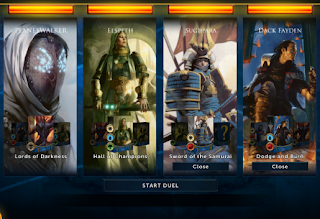 Review by Nick H.
Review by Nick H.
Reviewing an expansion is always a difficult thing to do. Generally speaking, they do not stack up quite as well in value when comparing the expansion to a base game. That is the same with the new expansion for Magic 2014. I reviewed the original game to a score of 4.5 out of 5 stars back when it first released for $9.99.
Now the expansion is out at half the price ($4.99), and the question of value becomes a little bit more difficult to navigate. The original game was an outstanding value at that price, and in the end, I think this expansion is a good one too. For roughly the price of a new pack of Magic cards, you get new unlockable portraits and achievements, five new puzzle challenges, a new six level campaign (complete with the harder ‘Revenge’ version once you beat the standard path) and five new playable decks that come equipped with 280 unique cards.
While that may not fully stack up to the original in terms of sheer content, there is plenty to go through there.

My favourite deck is one that has an older mechanic – exalted – but in a new colour combination. I am used to white/black, but here Elspeth leads an interesting white/green combination. Most of the time, I know the cards so well that very little reading is required, but this expansion had me doing a few double-takes with cards featuring mechanics like hellbent (creatures get bonus effects if you have no cards in your hands), bushido (these samurai cards get a +1/+1 whenenver they block or are blocked, making their usually low casting costs somewhat deceptive) and Ninjitsu (unblocked creatures often have paid special effects like the ability to draw an extra card or force a discard).
Non-Magic fans might not understand what I wrote above, but if you’ve played the original release of the game (and you really should have), it will be enough to know that these cards add a great deal of extra depth to the basic strategy.

Overall this is a good expansion worth checking out for fans of the base game. Most of the content can be beaten in an afternoon, but the new decks and cards give you another reason to open up that deck manager and try some new combinations out.







